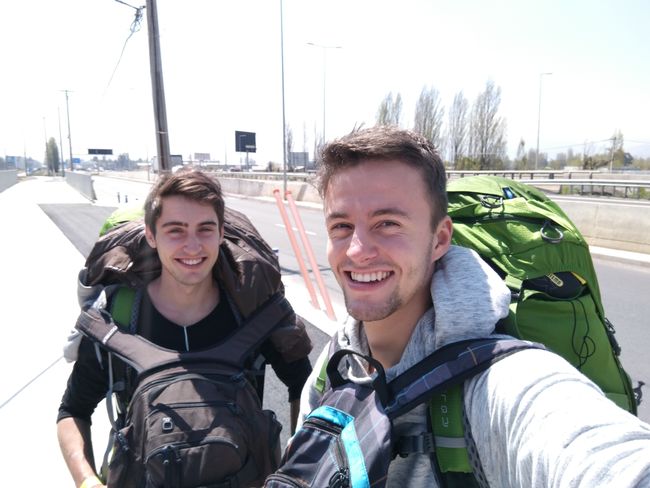
See the world with us
vakantio.de/travel_the_world_with_us
The most dangerous road in the world, a detour to Santa Cruz, and an odyssey of bus rides!
Pubblicato: 27.01.2018
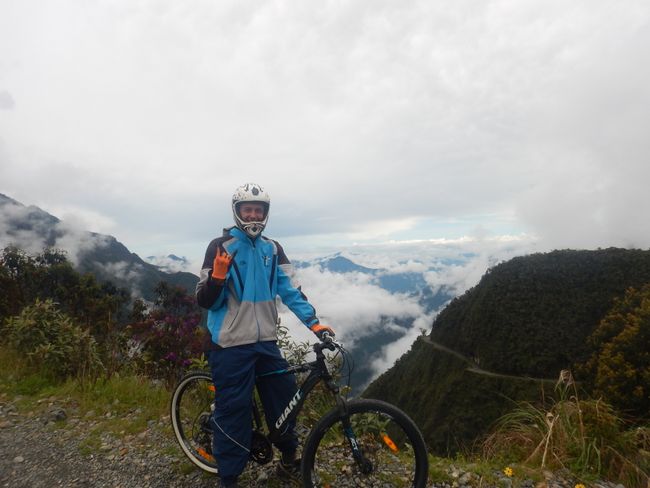
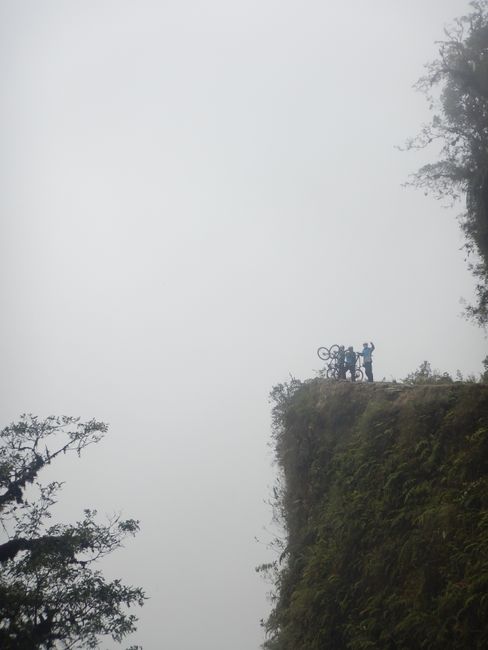
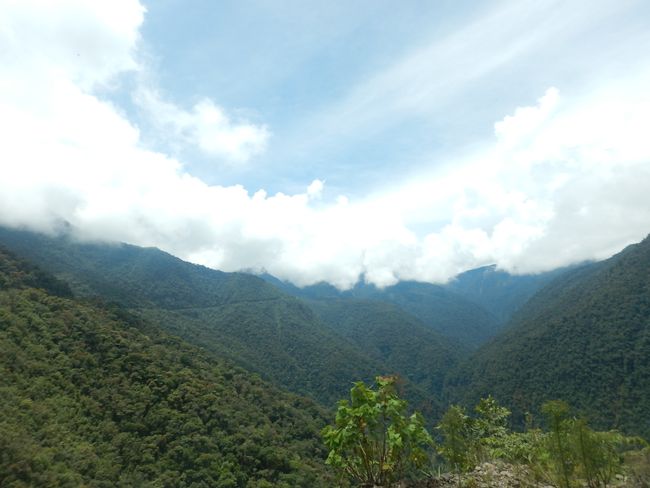
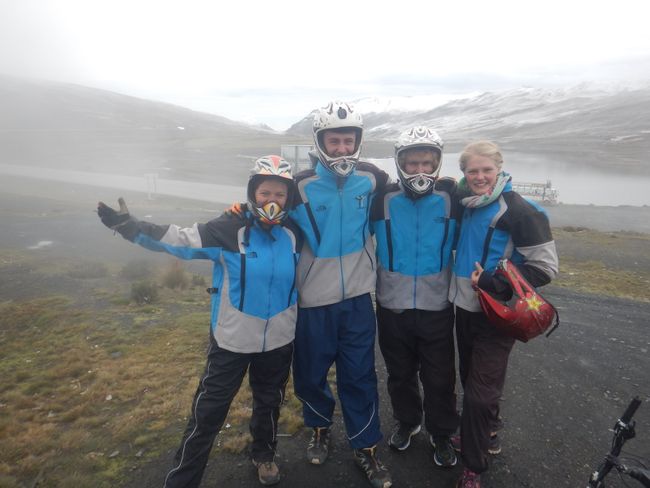
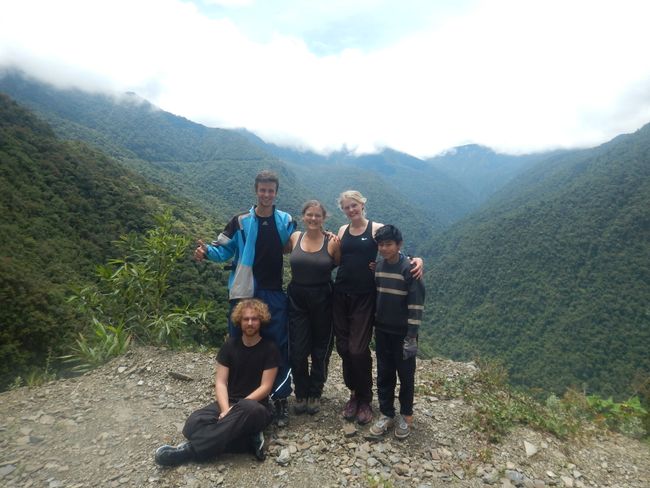
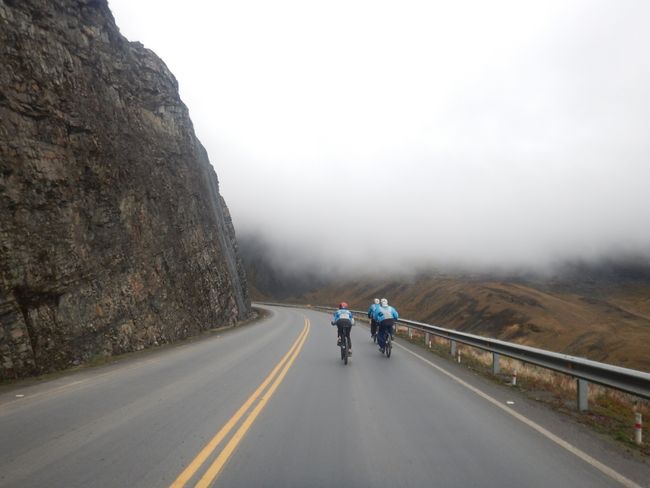
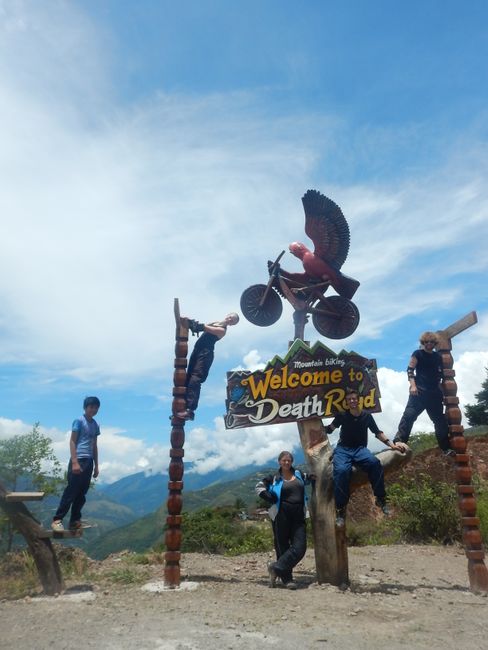
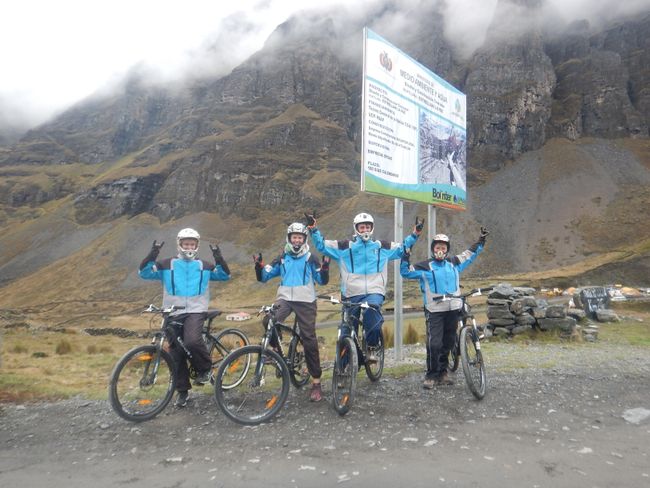
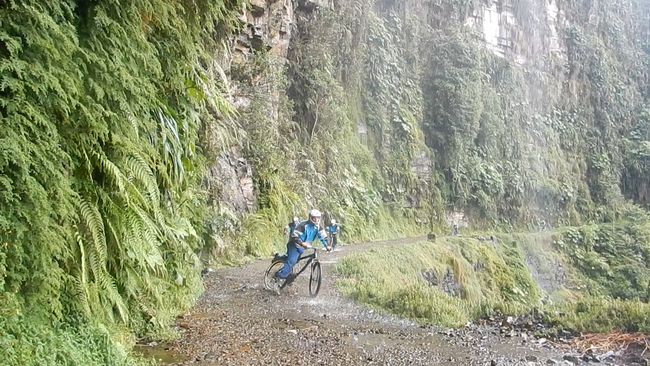
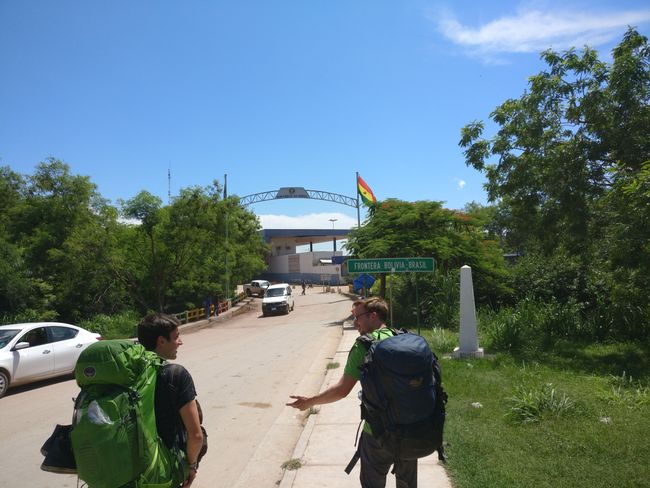
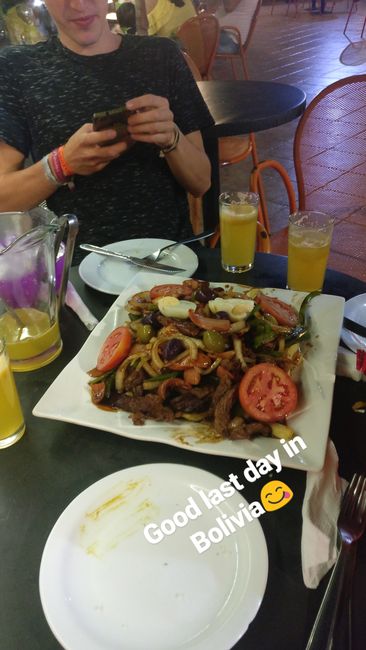
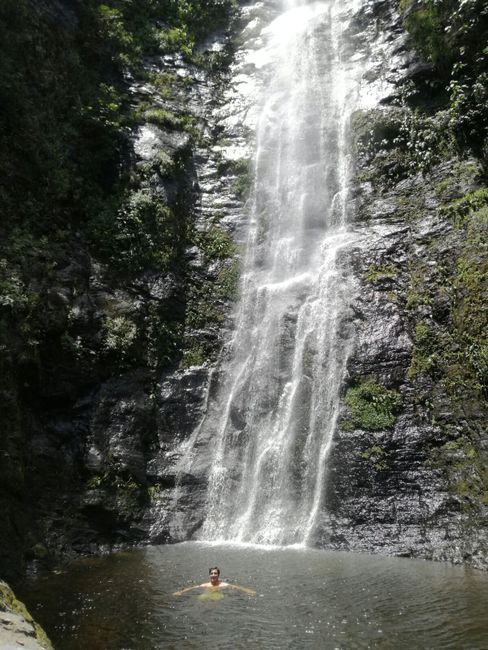
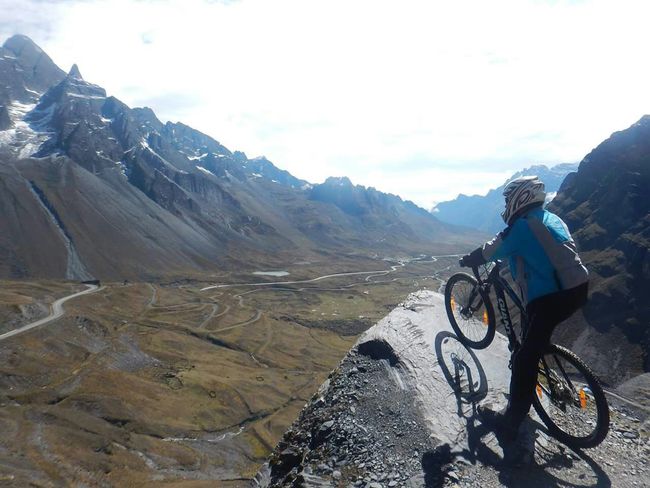
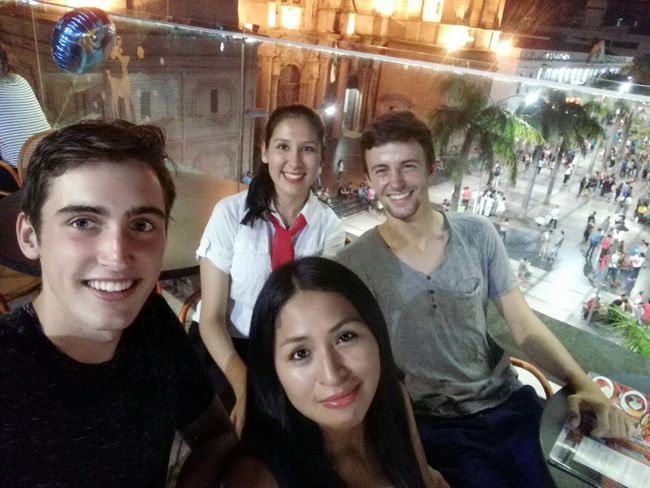
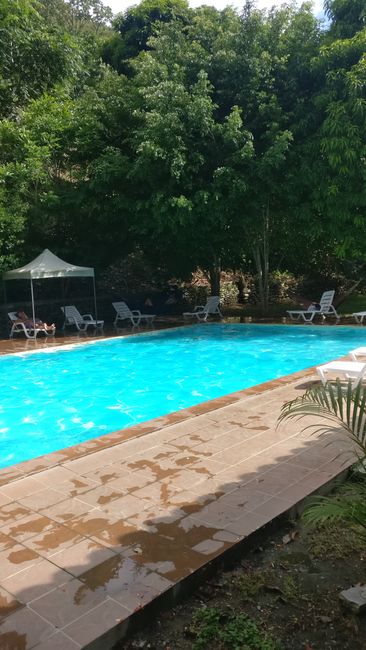
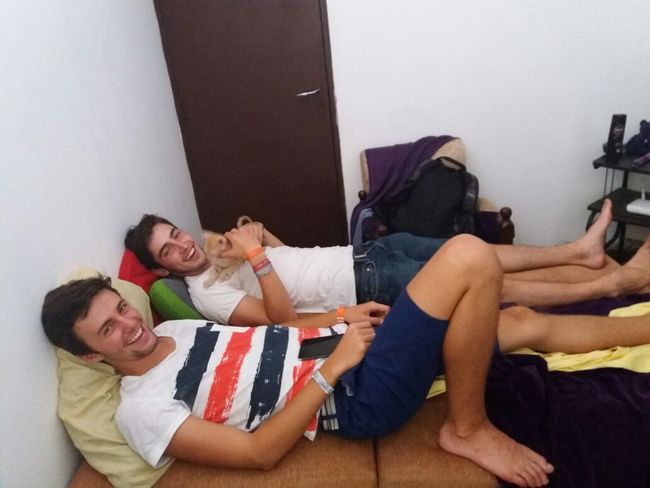
Iscriviti alla Newsletter
Right after Huayni Potosi, the next highlight was already waiting - the Yungas Road, better known as Death Road, and this name did not come out of nowhere!
The road is very narrow, without guardrails, and passes by very steep slopes. The road condition is usually very poor due to rain and muddy, swampy terrain. Rockslides and landslides are also not uncommon.
However, until 2007, the road was also used by trucks and oversized vehicles in both directions, which resulted in 200-300 travelers being killed on this road every year until 2007. Since 1995, it has also been considered the most dangerous road in the world!
So, enough drama, don't worry we're 'still' not suicidal ;-)
Since 2007, there has been an alternative modern, two-lane route where all the heavy traffic takes place. The real 'Death Road' is now used mainly by mountain bikers and the accompanying vans of tour providers. Since the bicycle traffic only goes downhill, let's say it's only a little bit dangerous now. And why are we doing this anyway? Because it offers 80km of downhill fun and over 3000 meters in altitude!
At 7 o'clock in the morning, we were picked up by a minibus. We were only a small group of four people: Malin from Germany, Manfred from Sweden, Sanna from Denmark, and me. Anyway, the minibus took us to the La-Cumbre Pass at 4,670m. There we were equipped with complete safety gear and then the fun could begin!

Let's get started! (from left to right, Sanna, me, Manfred, and Malin)
Before we reached the 'real' Death Road, we drove 20km downhill on an asphalt road. Here we were still in the middle of the clouds, but sometimes we could already see a fantastic view!

Brakes were not necessary here
We quickly crossed the asphalt section, and now it was getting serious. Our guide explained to us that on the Death Road, unlike the rest of Bolivia, there is left-hand traffic. This is because when there is oncoming traffic, the driver, who sits on the left side, can see the abyss better, as millimeter work is needed here! However, this also meant that if a van were to come towards us, we would have to pass on the side facing the cliff...

At the beginning of the Death Road
However, this did not stop us from enjoying the descent to the fullest! Another fantastic thing about the Death Road is that you start at an altitude of 4,600m in the middle of the Bolivian mountain landscape and within 1 hour you are already surrounded by the rainforest!
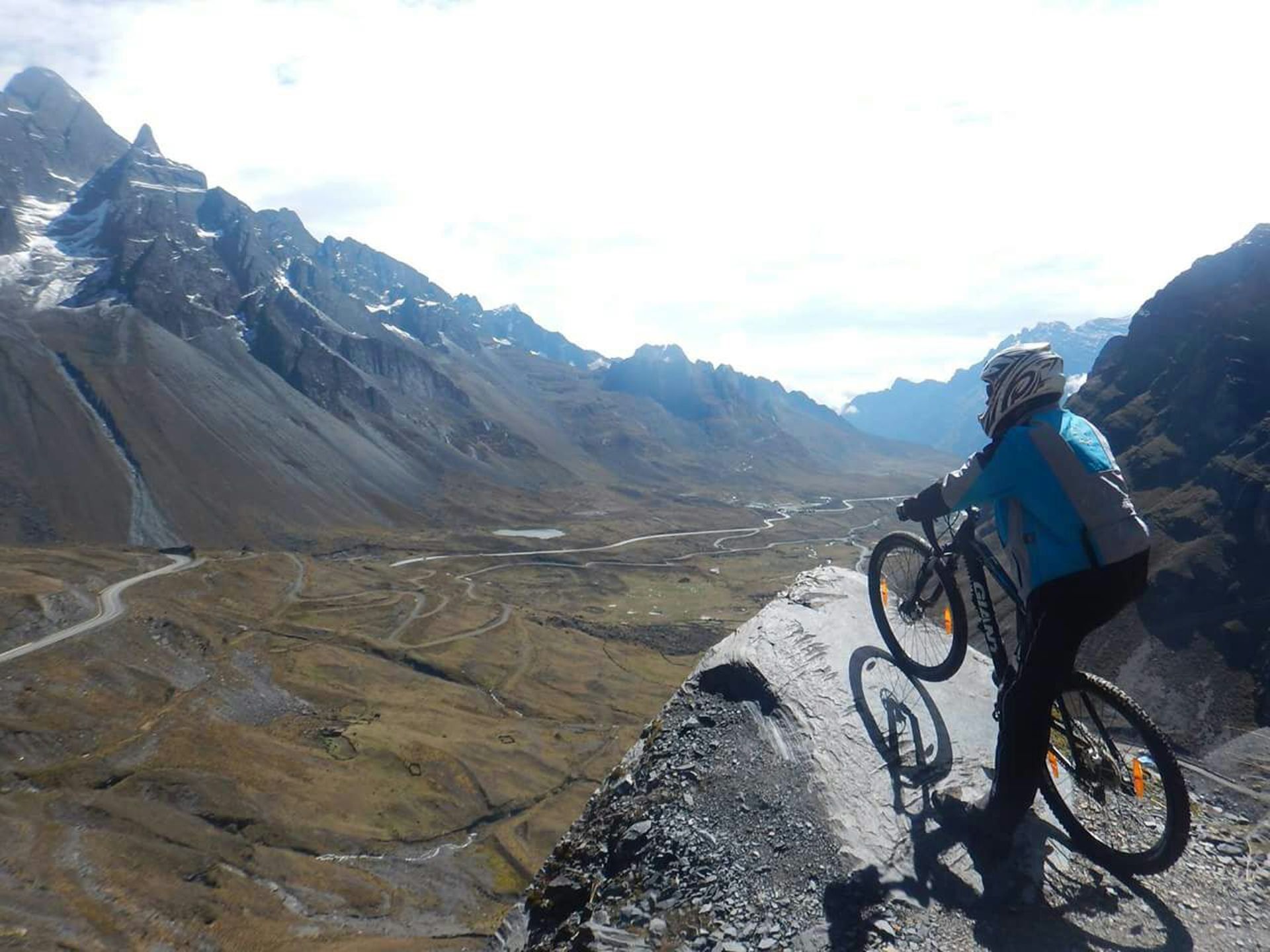
The view, still relatively early on the Death Road

It quickly became tropical!
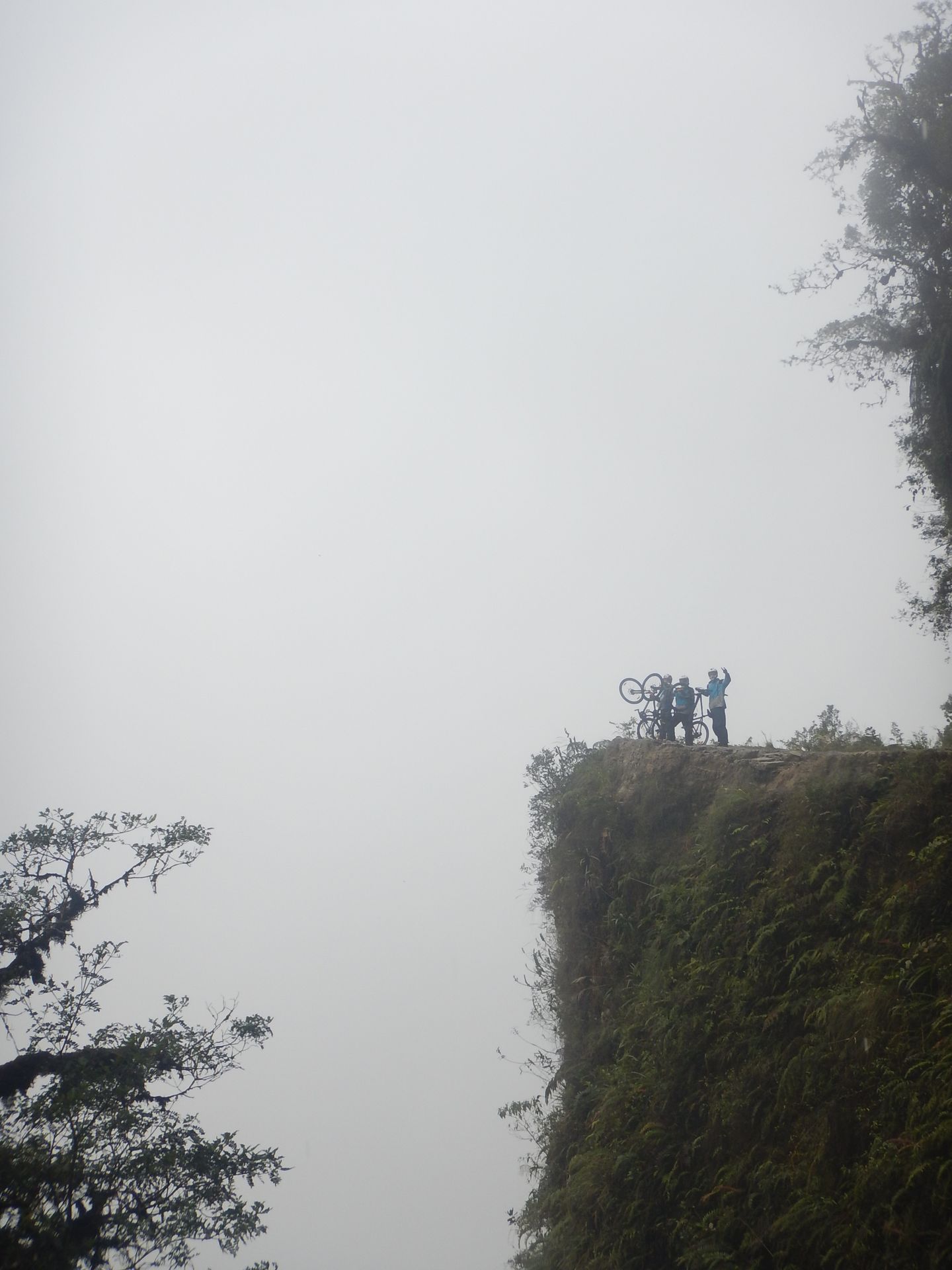
Yes, it's steep downhill here!
During the descent itself, I actually felt quite safe. The road is in extremely bad condition and full of even larger stones, but I was already somewhat used to that from mountain biking in Inzing. The difference, however, is that in Inzing, there are not dozens of meters of descent next to the path, and this is in free fall, which means falling is prohibited! As I said, I felt really safe and raced ahead with confidence until a certain moment...
We came to a waterfall that was right above the road. Our guide went ahead, as he wanted to make a video of us. When he was in position, I started pedaling and gained quite some speed, the others followed me. But right under the waterfall, things got really precarious! Suddenly, my rear wheel slipped, and I was already almost on the ground (in the worst case, in the abyss), but somehow I managed to regain my balance and narrowly avoid the fall. The guide just looked at me, shook his head slightly, and said, 'You are crazy man!' In that moment, it didn't seem so bad to me, but when he showed me the video, I saw how close I was to the edge and that it was definitely time to thank my guardian angels again!

It could have been close...
After the brief shock (which the guide had more than me), we continued to the last part of the Death Road.
After about 2 hours of exclusive downhill riding, we finally reached Coroico at an altitude of 1,200m! We descended a total of 3,400 meters with our bikes, and it was a lot of fun.
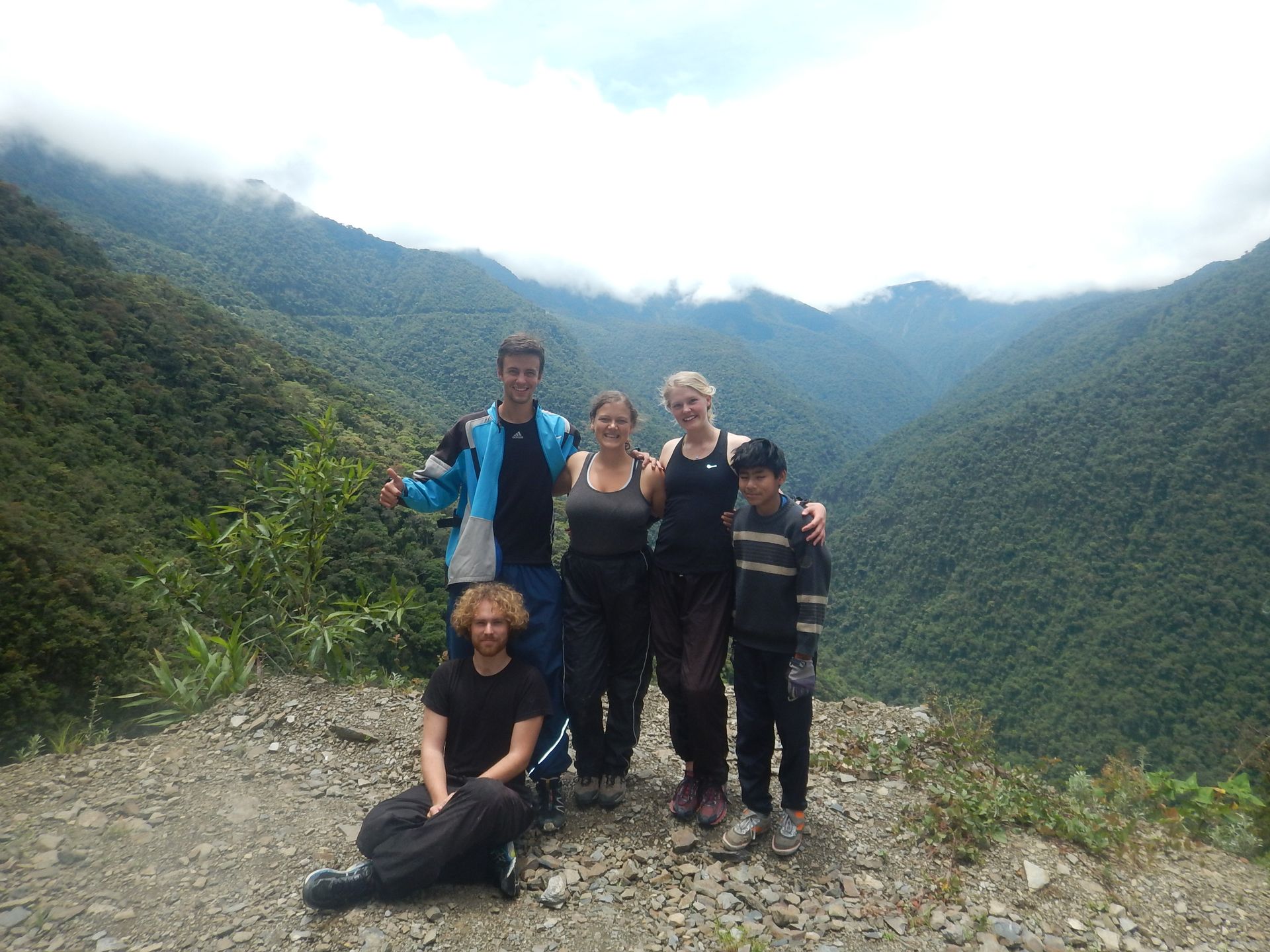
Our group with the guide's son
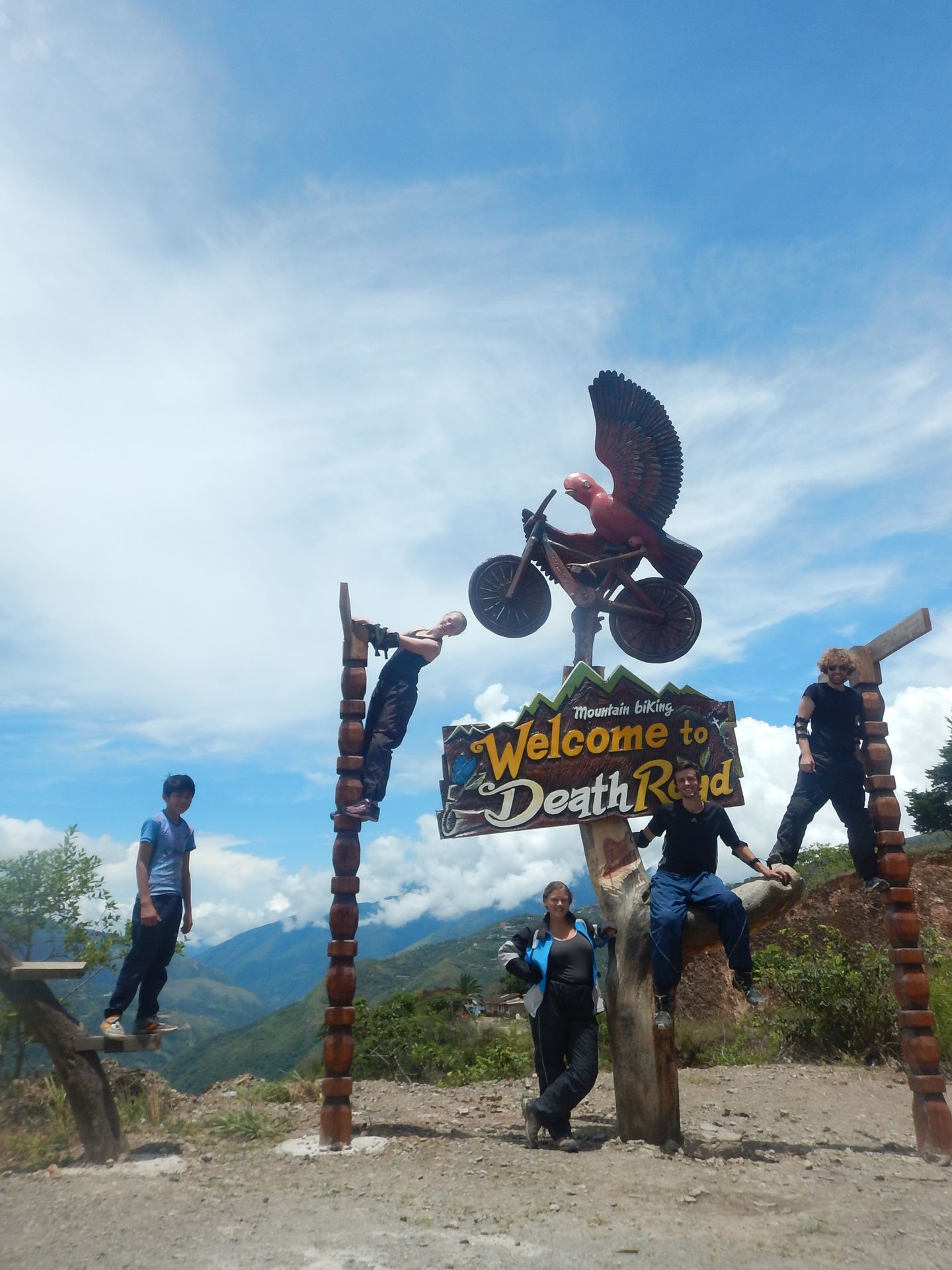
Another group photo, at the end of the Death Road, not at the beginning ;-)
To top off the day, we went to a campsite where a pool and an 'all-you-can-eat' buffet awaited us. Good food and relaxing in the pool, the perfect end to the day!

Relaxing here
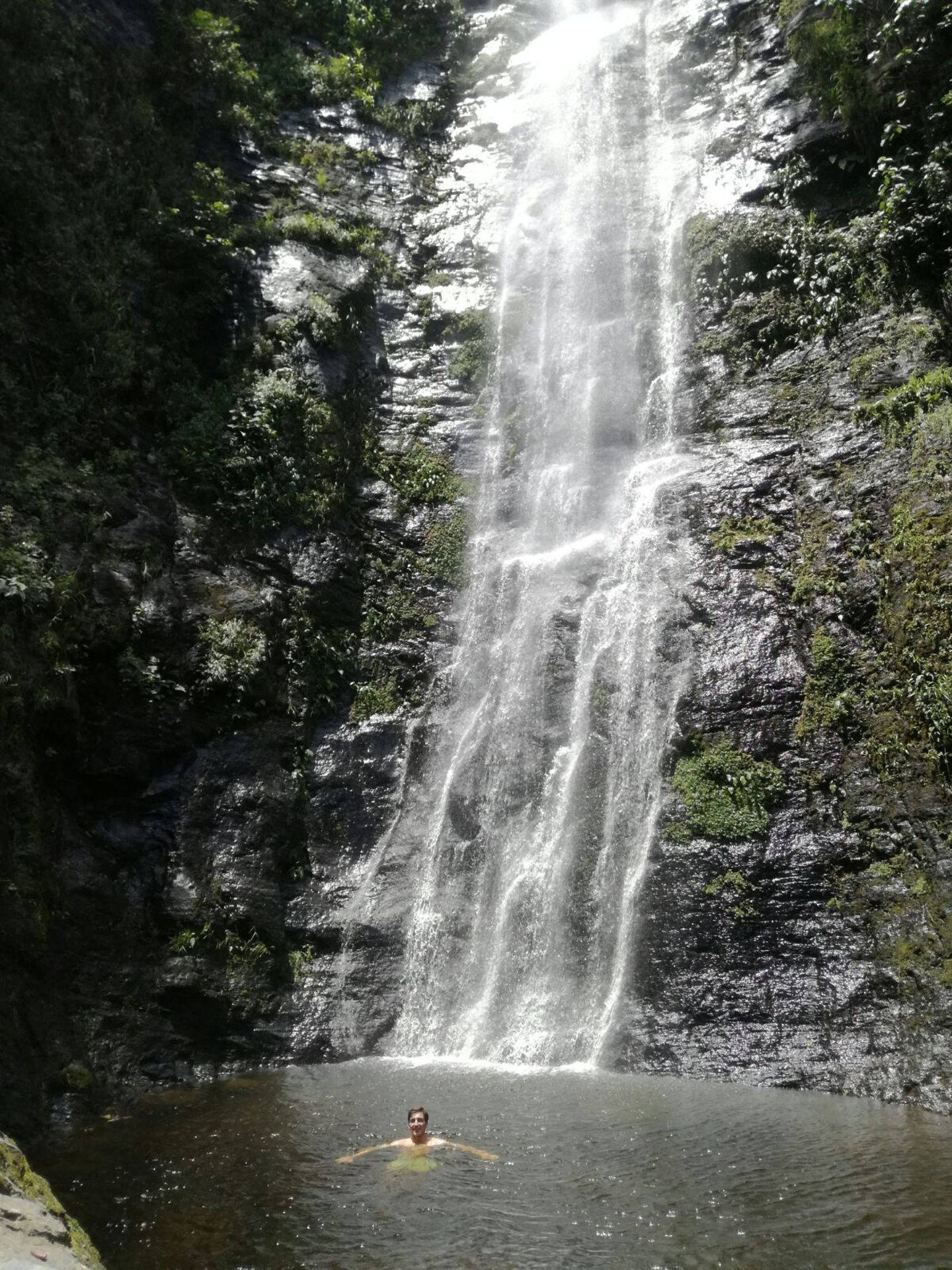
Gabriel had a relaxing day in Coroico
After the 4-hour drive back to La Paz, there was not much time to pack my things, as we immediately continued to Santa Cruz.
However, the bus ride to Santa Cruz was definitely the worst so far, with 20 hours for a distance of 600km, and without working air conditioning! I also had certain problems with my stomach again, so the relief was immense when I finally arrived in Santa Cruz! The first person I met was Gabriel, and together we went to our Couchsurfing hosts. Two girls, Adriana (27) and Adelaidet (26), who found a place for us in their small apartment. We spent a nice, relaxing day in Santa Cruz with them and their little kitten 'Manchitas'.

Relaxing with Manchitas
As a conclusion for Bolivia, we went to a 5-star hotel where Adriana works to have dinner. For €4 per person, we got a huge plate served on the rooftop terrace of the hotel, not bad at all!
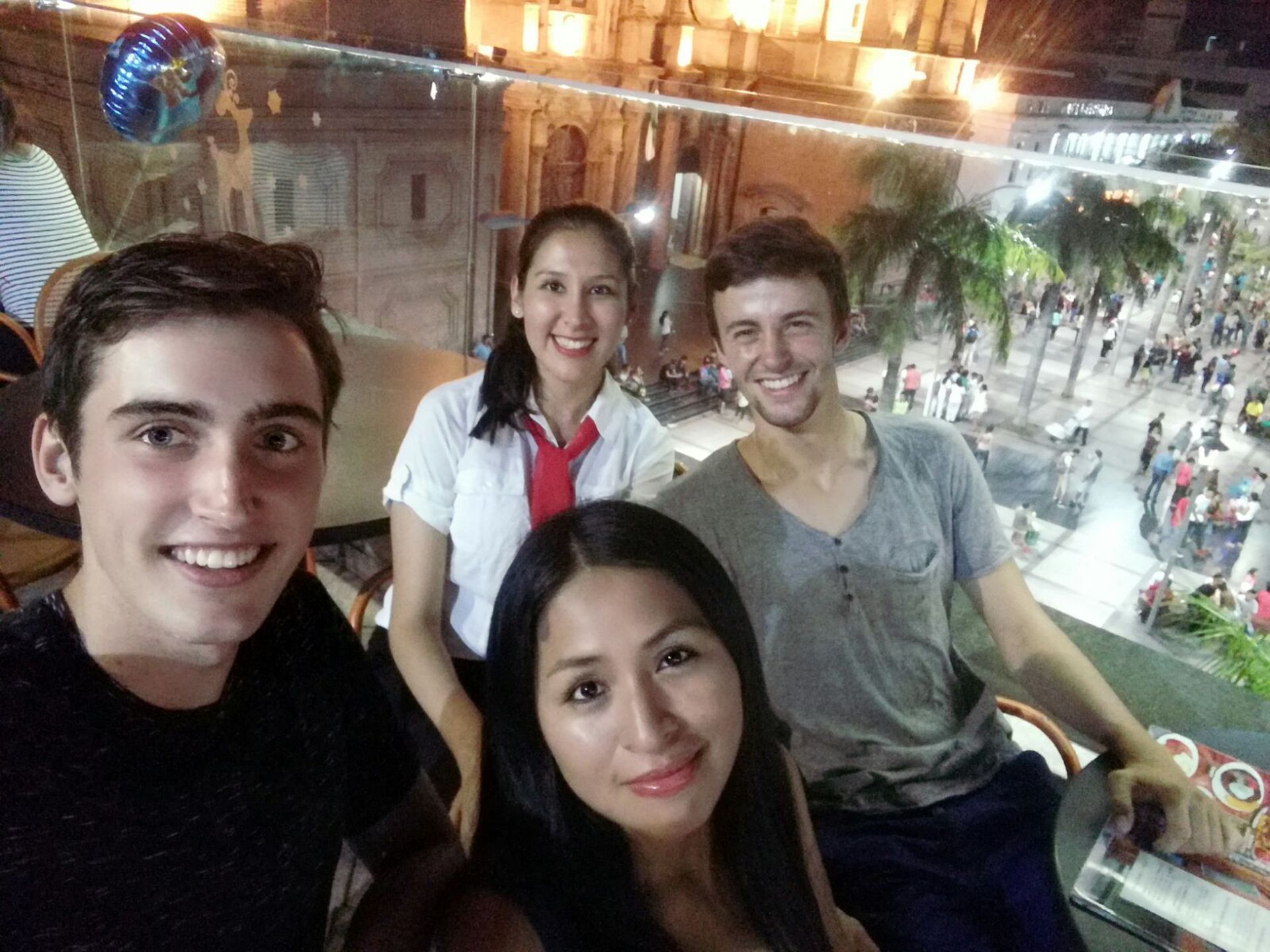
Big thanks to both of you!
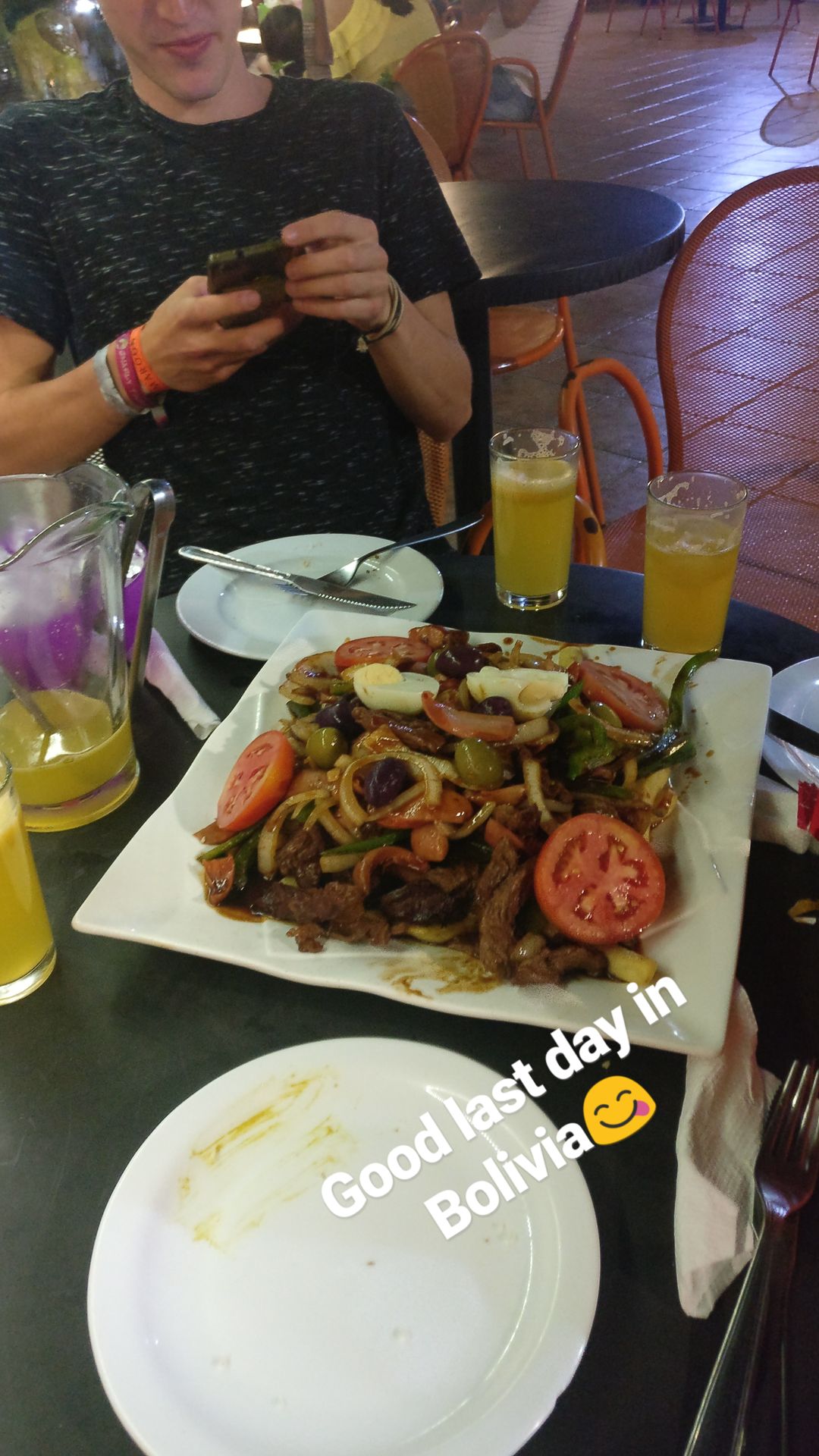
The plate was gone faster than expected
The next day, our long and surprisingly eventful journey to Brazil began! We were really looking forward to Brazil, finally warm weather and real beaches! But before we could enjoy the beaches, we had to endure an odyssey of bus rides.
The first bus took us to the border at Corumba in 12 hours, but since this bus was extremely comfortable, the time passed quickly.
At the border, endurance was required! It took a whole 4 hours just to get our Bolivian exit stamp, and when we reached the Brazilian side and saw that the queue there was even longer, and the procedure would take even longer here, we thought we could spend a whole day at this border.

When crossing the border
However, then we received an offer that we couldn't refuse. A guy from an agency offered us a minibus ride to Campo Grande (for the same price as the bus). The minibus was much faster, and since we didn't have to pay in advance, we wrote our names on his list. This turned out to be the best decision we could have made because after half an hour of waiting, the guy realized that he would have to wait for us forever. So he came to us and told us to give him our passports, and he would take care of it for us. With a slightly uneasy feeling, we handed over our passports, but we didn't regret it! Five minutes later, he returned with the passports, including the visa stamps. So we quickly realized how things work in Brazil.
However, we didn't make it that fast in the end. We still had to wait for 2 hours in a small hut for two other passengers, for whom the little 'trick' somehow didn't work anymore. (Thankfully, they were at least pretty far ahead in the queue)
But finally, it was time to go to Campo Grande, emphasis on 'should'! Because a driver from the agency drove us in his car to Corumba, which was 5 km away, to withdraw money so we could pay for the ride. We were supposed to meet the bus there, emphasis on 'supposed to'... because the bus didn't come, and the really unpleasant thing was that we had already put all our luggage on the bus. When the driver drove through Corumba and gestured to us that he had no idea where the bus was and that he believed it had already left without us, we got a little nervous. However, when traveling, you also learn how to take things lightly and how to make the best out of a situation, so we just had to laugh about our situation and the fact that our backpacks were probably gone now. But in the back of my mind, I had hope that the bus was stuck at the border. Fortunately, that was the case! After the unsuccessful search through Corumba, we returned to the border and joyfully spotted our minibus! The reason for all of this was that we had two Venezuelans on board who had come to Bolivia to buy clothing, hygiene products, etc. for their entire family, as it was no longer possible in Venezuela! However, the Brazilians had no mercy on them and searched their entire luggage and held them back for smuggling because they could not provide evidence that all the items were for personal use. After another two hours, they decided to leave all their things behind and ride with us. At that moment, we really felt sorry for them...
After more than 8 hours at the border and a lot of excitement, we finally headed to Campo Grande. This journey took another 6 hours, and once we arrived there, we immediately continued. Here, Gabriel and I went our separate ways again (at least for a while). He went to Sao Paulo to meet Roland and Felix, and I decided to take a detour to the Iguazu Falls.
I thought the whole excitement was over, but it wasn't. That same evening, I got a bus ticket to Cascavel, which was supposed to leave at 10:30 pm. When nothing happened at 10:30, they said the bus was delayed. However, communication was a bit difficult because they mostly understood my Spanish, but I didn't understand any Portuguese, and English was even more challenging. So I had no choice but to wait and wait and wait, but the bus just didn't come. A woman who worked right at the terminal could at least speak some English, but when I showed her my ticket and she looked at her list, she told me that the bus didn't even pass through there!
So I asked the bus agency again, and they suddenly also told me that there was no bus. After minutes of complaining and the friendly help of a few Brazilians, suddenly they said, yes, the bus will come at 2 o'clock. I asked the woman at the terminal if she believed this, and with a look of regret, she just shook her head. At that moment, I thought I would have to sleep somewhere in a corner of the bus terminal. But my luck didn't fail me! To everyone's surprise, the correct bus was there at 2 o'clock, and when the woman at the terminal said to me, with a nice, honest smile, 'You can go to Cascavel!', I gave her a big hug full of joy. So it was done, after another 12 hours of bus ride, I reached Cascavel, and from there, it was only an hour-long local bus ride to Foz de Iguazu! It took two whole days to finally arrive there, but once it's done, it's done, and one good thing came out of all the border theater, we got to know Lars there, a really funny German guy with whom we would have a lot of fun.
Author: Andreas
Iscriviti alla Newsletter
Risposta
